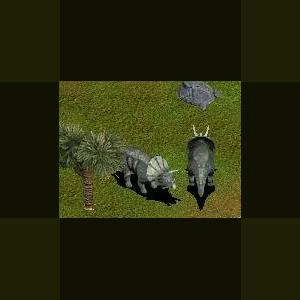About This File
Zuniceratops
Zuniceratops ('Zuni-horned face') was a Ceratopsian dinosaur from the mid Turonian of the Late Cretaceous Period of what is now New Mexico, United States. It lived about 10 million years earlier than the more familiar horned Ceratopsidae and provides an important window on their ancestry.
Zuniceratops appears to have been roughly 10-11 feet (three to 3.5 meters) long and three feet (one meter) tall at the hips. It probably weighed 200 to 250 pounds (100 to 150 kilograms). The frill behind its head was fenestrated but lacking epoccipitals. It is the earliest-known ceratopsian to have eyebrow horns and the oldest-known ceratopsian from North America. This set of horns is thought to have grown much larger with age.
Zuniceratops was discovered in 1996, by 8 year old Christopher James Wolfe, son of paleontologist Douglas G. Wolfe, in the Moreno Hill Formation in west-central New Mexico. One skull and the bones from several individuals have been found. More recently, one bone, believed to be a squamosal, has since been found to be an ischium of a Nothronychus.
Zuniceratops is an example of the evolutionary transition between early ceratopsians and the later, larger ceratopsids that had very large horns and frills. This supports the theory that the lineage of ceratopsian dinosaurs may have been North American in origin.
Although the first specimen discovered had single-rooted teeth (unusual for ceratopsians), later fossils had double-rooted teeth. This is evidence that the teeth became double-rooted with age. Zuniceratops was a herbivore like other ceratopsians and was probably a herd animal as well.
Zuniceratops is featured in the Discovery Channel Special, When Dinosaurs Roamed America.



Recommended Comments
There are no comments to display.
Create an account or sign in to comment
You need to be a member in order to leave a comment
Create an account
Sign up for a new account in our community. It's easy!
Register a new accountSign in
Already have an account? Sign in here.
Sign In Now